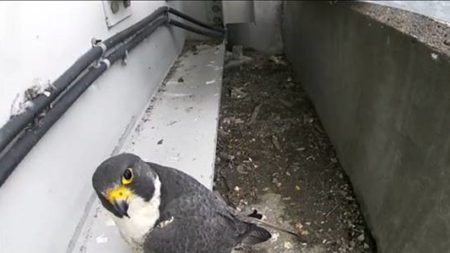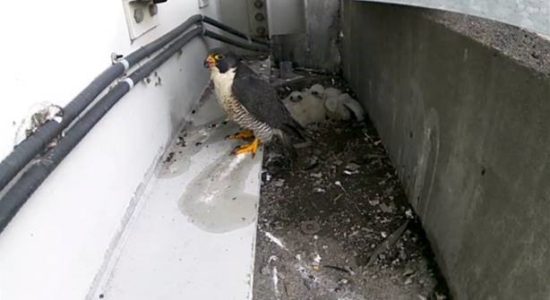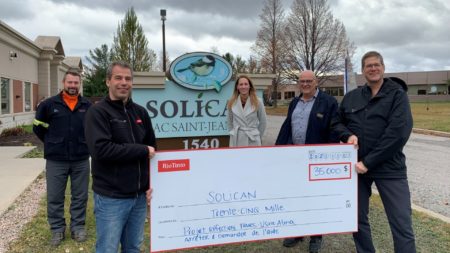A Collaboration in Full Flight

Power Operations employees are now used to dealing with peregrine falcons each year, as these birds have chosen to build nests and raise their chicks at Chute-à-Caron Power Station. The Ministère des Forêts, de la Faune et des Parcs (MFFP) and Power Operations collaborate on an ongoing basis to make sure that Rio Tinto’s facilities and the surrounding biodiversity coexist peacefully.
Anne-Marie Bouchard, Biologist, MFFP, noted, “Peregrine falcons prefer to nest on rock faces, but they are also known to use certain man-made infrastructures, such as buildings, bridges, and quarries.”
Ms. Bouchard added, “There are two nesting sites on the walkway to the upstream deck of Chute-à-Caron Power Station. Since access is restricted, someone from Rio Tinto comes with us so that we can access the walkway, observe the nesting falcon couple, and set up motion-activated surveillance cameras every year. These cameras are placed in the two areas identified as being suitable for the nesting of peregrine falcons, which are designated as a vulnerable species in Quebec. Videos are recorded when movement is detected, providing us with a wealth of data on this bird’s nesting habits.”
Because peregrine falcons are vulnerable, the MFFP’s main goal is to collect data to document their nesting and reproductive success, from egg-laying and the rearing of young birds to their final flight. The partnership between the Power Station and MFFP has helped make the area feel safe for the birds, since chicks have returned after fledging to feed and rest.

For Rio Tinto, protecting biodiversity and managing natural resources are priority issues within the operations.
Stéphanie Girard, Environment Team Leader, Rio Tinto, said, “We want to minimise our impact on the local biodiversity. It is essential for us to peacefully coexist with it, especially at Power Operations, where biodiversity is all around us because of the facilities’ location.”
Rio Tinto supports these efforts by helping set up the monitoring equipment and delimiting the site so that the falcons can live in peace. “Since this area is locked and access to it is restricted, we must accompany people at all times to keep them safe,” Ms. Girard added. “To reduce disturbances, we have posted information signs and used ribbons to mark off a security perimeter. Employees in the area are also very aware and know that they have to take a different route. After three years of coexistence, we are proud to welcome these birds and contribute to research.”
Ms. Bouchard said, “I would like to highlight the great partnership that we have with Rio Tinto, because adapting sensitive areas is not necessarily easy. However, the Environment Team’s support has been excellent, and our constructive discussions with its members have helped us find solutions to reduce disturbances of the falcon couple when it is nesting. Our efforts are proving to be successful because we know that the young birds are reaching the fledging stage.”


